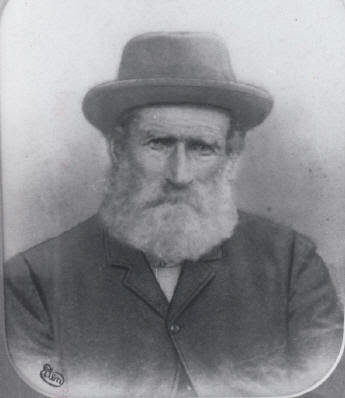South Coast NSW History Story
The Davidson Family of Twofold Bay
The Davidsons of Twofold Bay
Alexander Walker Davidson (1806 – 1897), a cabinet maker, his wife Jane (c1805 – 1892) and their seven children (all under the age of 9) left Aberdeen in Scotland aboard the Mathesis on 16th May 1841. It took them until 31st January 1842 to reach Sydney, mostly because they were delayed in Rio de Janeiro for 92 days whilst repairs were made to their ship following a serious fire. On the voyage, one of their daughters Isabella Collie Davidson died. She was buried at sea.
Alexander worked in Sydney for a time until, in 1843, he was employed by Benjamin Boyd who was then building Boyd Town on the shores of Twofold Bay. He would then have become very acquainted with the shore-based whaling being undertaken in the area by the Imlay Brothers and by Ben Boyd.
From 1855 to 1857, the Davidson family ran the Squatters Arms Hotel at Bunyan, north of Cooma (the building is still there, beside the Monaro Highway), and had a permit to sell liquor at the Cooma Races.
n late 1857 the family returned to Twofold Bay. Alexander purchased the wreck of the Lawrence Frost that had been run ashore in Twofold Bay in 1856 after being in extreme danger of sinking. He used the ship’s timber to build the family a house.
In 1859 gold was discovered at Kiandra, so Alexander and three of his sons trekked to the goldfields to try their luck. They had limited success so returned to the coast either in 1860 or 1861. They then turned their attention to whaling.
The family was to become the most successful, most well-known whaling family on Twofold Bay. Much of their success was derived from working with local Aboriginals who had developed a relationship with ‘killer whales’ (orcas) that herded migrating whales into shallow waters where they could be killed. The local Aboriginals (as they had done previously with the Imlay brothers) worked as crew aboard the Davidson’s whaling vessels.
Try works (furnaces used to heat blubber from whales to the recover their oil – then, in the days before kerosene became available, a valuable commodity) were constructed adjacent to their whaling station.
Alexander also famed animals, grew vegetables, had fruit tree and fished to supplement his income from seasonal whaling.
Alexander’s sons – John, Alexander (Sandy) and Archer – and his grandson, George, were all involved with the whaling industry that extended over a period of about 70 years. At its peak about 10 or 15 whales would be caught and processed each year. By 1925 only two whales were caught. The last whale was taken in 1929.
Image: Alexander Walker Davidson
